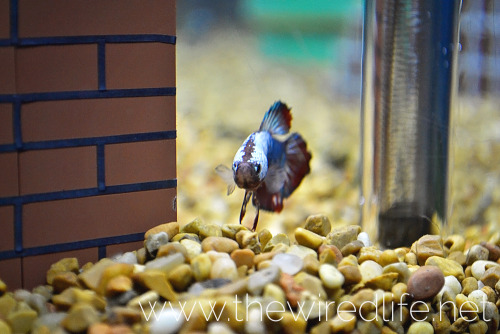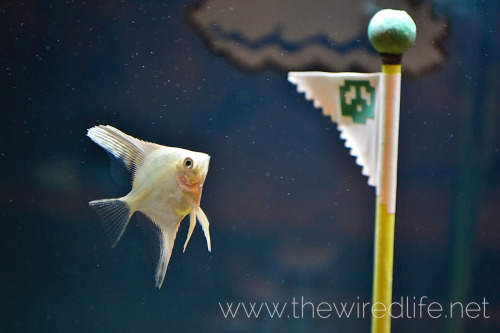Sophianotloren
Shared posts
Dead Wrestler: Farewell to the American Dream
The Rude Pundit is not going to review the larger-than-life career of Dusty Rhodes, whose real name was Virgil Runnels, Jr. and who was beloved by everyone in his sport. You can find that elsewhere. This fan had given up on professional wrestling long before Rhodes made his justifiably famous "Hard Times" promo speech in 1985, where he explicitly linked himself with his working class fans and gave sympathy to people who lost jobs or couldn't pay the bills.
No, for the Rude Pundit, one of the formative moments in his very young life was watching Dusty Rhodes face down his enemies who had once been his friends. You're gonna have to forgive the fog of decades here (and corrections will be made if necessary), but here we go: When Rhodes first started wrestling he was booked as someone who veered between bad guy and good guy. He was in a tag team partnership with Pak Song, a Korean wrestler who was, obviously, a bad guy (it was the 70s - Korea was as good a stand-in for Vietnam as any). They were managed by the evil Gary Hart. Yeah, it was a complicated, scripted soap opera, but, goddamn, it was compelling.
In 1974, Rhodes and Pak Song were fighting against another tag team partnership when, in the middle of the match, Pak Song and Gary Hart turned against Rhodes and began to beat him (there was some reason, but the Rude Pundit can't remember). This was in Florida, and the Rude Pundit remembers watching on TV as Rhodes rose up to fight back against the other men, who ran away. It was a brilliant move, one that Rhodes had a hand in scripting, and it turned Rhodes into a permanent good guy, someone with a grudge and a cause - to destroy Gary Hart and Hart's wrestlers.
Rhodes became a superstar after that, associating himself directly with his audience by using the nickname "The American Dream." It was an enthralling transformation for a kid to see, a tale of redemption and triumph in a squalid setting. Rhodes understood, as much as any wrestler, as much as any performer, as much as any popular artist, that part of the thrill for the fans is being a part of the rise of their hero. He offered hope in a time of real despair, with the obscene Vietnam War coming to its sad ending, with Nixon's crimes being revealed. The world was in chaos, yes, but in the middle of Florida in the 1970s, Dusty Rhodes showed us that we could come back, that our working class backgrounds made us noble, and that even a fat slob with a lisp and shaggy blonde hair could be a champion. Besides, he had a patented move called the "Bionic Elbow," which involved him leaping into the air and landing on his opponent with his elbow, and he eventually headlined matches at a sold-out Madison Square Garden. C'mon.
If you think this is too over the top, you don't understand the passion that professional wrestling provokes in its fans. When the Rude Pundit got to go to live matches and see Dusty Rhodes (and Andre the Giant, once), it was the same thrill he had seeing Ian McKellen perform on stage. In fact, he believes that the extravagant theatricality of wrestling was what got him interested in plays that are directed at audiences of workers. The Rude Pundit can't comment on today's wrestling because, other than when someone like a Hulk Hogan surfaces in pop culture, he doesn't know much about it. But he loves talking to WWE fans because it provokes him to remember how much it meant to him.
When we'd play fight, the Rude siblings would pretend to be various wrestlers. We would argue over who got to be Dusty Rhodes, who got to act, for a little while, like the American Dream. If we embody him, if we could do him justice, perhaps we too would deserve all his rewards which we, like him, would pass on to others.
Final Note: Rude reader Dan B. knew Dusty Rhodes and had this to say about him: "He was larger than life but totally down to earth. A creative genius and a force of nature. But also, he was able to focus on the person he was with, co-worker or fan, and relate on a deeply personal level that always left an indelible impact for life in that individual. He was one of the biggest box office draws in the history of The Business, but his blue collar sensibilities never left him. 'I have wined and dined with Kings and Queens, but have slumbered in alleys eating pork and beans.' He was truly a plumber's son from Austin who never lost his love of The Common Man. This was what make him one of the most beloved babyfaces of all time. If he was your friend, you had a defender equaled by none. I loved him like a big brother and looked forward to the next time I would see him and be welcomed like the prodigal son. This is a huge loss for me and everyone who ever knew or met him.
"The most important fact about Dusty is that his affection for the proletariat was totally authentic, not a 'work.' Patrons could sense that."
Pain Festival
As a palette cleanser from the last four sex games, I've been remaking my favorite of Alan Hazelden's Puzzlescript suite, "Mirror Isles", with my own art and narrative. It's been refreshing to have the design of something already figured out, and for the past two weeks I've just been pumping out art and code.
The game has come together surprisingly quick. I'm not sure if it's commercial or anything yet, I guess me and Alan will have to talk about that at some point, but for now I'm enjoying this as a craft exercise void of any marketing concerns.
Tentatively, it's called "Pain Festival", and it's about a late 20-something black woman whose life is kinda falling apart in the way that "millennial" lives have been collapsing, but she's going to figure out how to pull through it and be more than her pain.
The script is mostly done and implemented, and incorporates an interesting story note from Alan for Mirror Isles that never actually got used, so it's kind of fun to flesh out that aspect more. I'm currently contemplating whether it should have full voice-acting or not... I think I'm probably going to do it. Somebody stop me, please...
I got a lot of feedback, mostly from men, about why Hurt Me Plenty doesn't let them spank women. My response is usually something like, "there are already hundreds of games that let you inflict pain on women." At the same time, I'm seeing a lot of my women friends suffering in games, wondering if their careers will be defined by their ability to suffer. So this is me trying to make a game about women and pain, except not for the sexual appetites of straight men. I hope it speaks at least a little bit to women, or at least lets them know that I've been listening.
Puzzle games usually treat narrative in a pretty instrumental way, which is maybe one of the nicer things about them -- no bullshit lore databases, no heavy exposition, just some fucking puzzles. At one point, Mirror Isles says something like, "oh hey this game element is different now, oh well", and there's a sort of humanity to that.
I want to try to meld that relative sparseness with the sensibilities of the personal Twine genre. Personal stakes, nothing about saving the world except your own world.
On the other end of the spectrum, you have the Braids and Talos Principles of the world, trying to argue their crate-pushing interactions are deep introspective ruminations of pure philosophy, which mostly just makes me cringe. As far as I'm concerned, those games have less story than Mirror Isles.
It's also been fun to try to do technical things I don't normally do -- working with a tile system, or programming a MVC-ish game state manager for undo support, or handpainting some character dialog portraits.
It also has a mom in it. I think putting more moms in games is a small but radical way of combating militant masculinity in games. You thought gaming was your paradise, your gamer solitude where you can wallow in your complacency? Wrong. Your mom is going to invade your video games -- suddenly the fog wall will materialize, the red phantom will step out and point her sword at you -- and tell you she loves you and you should call her more often, and would it kill you to change your sheets every now and then? Then she'll stab you in the face and absorb your souls. #Momification #MomGames
Cloudy with a Chance of Abstraction: A Biennal for Weather Art

Spencer Frazer, “Storm Shudders,” oil on media 30 x 42 (courtesy 2015 National Weather Center Biennale)
OKLAHOMA CITY — Beneath the tumultuous skies of Oklahoma, the National Weather Center (NWC) is hosting its second curated exhibition interpreting meteorological phenomena through art. The 2015 National Weather Center Biennale includes 88 works in the towering atrium of its main building on the University of Oklahoma campus, with photography, painting, and works on paper all inspired by the human experience with weather.
The first NWC Biennale was in 2013. Curator Alan Atkinson told me upon its announcement in 2012 that “the weather has been a source of inspiration for as long as humans have made art — what we hope the Biennale will do is perhaps help stir up some new ways of thinking about the weather as subject matter. After all, we live in an era when we probably know more about weather than we ever have, yet never has the weather, once the most mild topic of conversation one could imagine, been so controversial.”

Installation view of the National Weather Center Biennale (photo by the author for Hyperallergic)
Climate change, drought, and other current weather issues don’t make overt appearances in the exhibition, but each piece is a personal attempt to understand and interpret weather. This year’s curator, artist Mel Chin, selected California-based artist Mitch Dobrowner’s “Landspout” for his Best in Show, stating in his remarks that the photograph — capturing an ominous storm cloud with the dimensions of a dirigible — “shows the power of a moment.”
The participants include both studio artists and storm chasers like Greg Stumpf, who took an eerie photograph of tornadic clouds over Route 66. And there’s a regionalism in the international art, from Spencer Frazer with his “Storm Shudders” painting interpreting tempestuous dark clouds consuming a blue sky in a Pacific Northwest landscape to Roger Edwards with his painting of ice breaking on the cool surface of Alaska’s Portage Lake. Along with the showy storms, there is an appreciation for quieter moments of nature, such as Carol Beesley’s “Bluff, Johnson Ranch, Near Guymon, OK” of the sun’s warmth altering the colors of a rocky hill in Western Oklahoma, or Richard Hoff’s “Hot and Humid” illustration of a muggy afternoon where the heat has an almost physical presence in the shading.

Carol Beesley, “Bluff, Johnson Ranch, Near Guymon, OK,” oil on canvas; O. Gail Poole, “Bradley Wheat Fields and Storm,” oil on canvas (photo by the author for Hyperallergic)

Richard Hoff, “Hot and Humid,” paper, dry media, 15.5 x 35 (courtesy 2015 National Weather Center Biennale)

Mitch Dobrowner, “Tornado Triptych,” pigment ink on cotton rag; M’Liz Keefe, “Northern Atlantic from Fogo Island,” oil on canvas (photo by the author for Hyperallergic)
The NWC is already planning ahead for another Biennale in 2017, with the call for entries planned for the fall of 2016. In addition to the National Oceanic and Atmospheric Administration (NOAA), the NWC complex hosts an impressive mix of academic and private company research, and it would be interesting in the future for the building to be more actively involved with the art. There are different ways of understanding weather, and as the world’s only biennial dedicated to meteorology themes, the art is an access point for viewers to consider how the rains, storms, heat, and snows impact their lives, and the science behind it.

The “Dorothy” and “D.O.T. 3″ tornado monitors from the film ‘Twister,” and one of NOAA’s real TOTO portable tornado observatories used in the 1980s, with John Hulsey’s “Refuge,” oil on canvas (photo by the author for Hyperallergic)

Roger Edwards, “Twisted Perspective,” photograph (courtesy 2015 National Weather Center Biennale)

Don Cornelius, “Breakup on Portage Lake,” oil on media, 22 5/8 x 28 5/8 (courtesy 2015 National Weather Center Biennale)

Installation view with David Holland, “The Blessing,” oil and canvas (photo by the author for Hyperallergic)

Art by Antonio Weiss displayed on a screen that rotates biennale art alongside weather reports (photo by the author for Hyperallergic)

Jason Sacran, “Rain,” oil on media, 27 x 23 (courtesy 2015 National Weather Center Biennale)

David Mayhew, “Sky Fall,” photograph, 26 1/2 x 36 1/2 (courtesy 2015 National Weather Center Biennale)

National Weather Center, Norman, Oklahoma (photo by the author for Hyperallergic)
The 2015 National Weather Center Biennale is at the National Weather Center (120 David L. Boren Boulevard, Norman, Oklahoma) through June 14.
Dressing Like a Prisoner Could Get You Out of Jury Duty, One Way or Another
As a judge in Vermont warned this potential (but presumably unwilling) juror, doing this could get you a little jail time for contempt of court. That would most likely get you out of jury duty, though, at least for a couple of days.
Having said that, the strategy actually worked in this case. According to the report, after the man arrived, "[d]eputies directed him to an empty courtroom to meet with the judge...." He was probably wishing he'd brought an extra pair of striped pants at that point, but after giving him the warning, the judge let him leave.
It's possible they just didn't have an old-timey jail to send him to, I suppose. I wouldn't show up in an orange jumpsuit, that's for sure, lest you get confused with somebody who's already supposed to be in jail.
The man told a reporter that the juror instructions didn't restrict the type of clothing he could wear, which is the type of argument that, as we say in the business, won't work.
US House of Representatives Passes Controversial Art Protection Bill

Egon Schiele’s “Portrait of Wally” (1912) was stolen by the Nazis (image via Wikimedia)
On Tuesday, the US House of Representatives passed a bill that would ensure that authorities cannot seize works of art brought into the United States for temporary display in cultural institutions — even if they’re determined to have been stolen.
The Foreign Cultural Exchange Clarification Act — or H.R. 889 — would amend the existing Foreign Sovereigns Immunities Act to make an important distinction. Under the current law, if a museum displays a vase or other object loaned by a foreign government, and it’s discovered to have been stolen, it cannot be seized if the US President deems its display to be in the national interest (with the exception of Nazi-looted art). That immunity does not apply to artworks loaned by foreign governments that are shown in commercial galleries.
And here’s where the problem lies: current law does not clearly differentiate between artwork on display temporarily in a museum and artwork on display in a gallery. That means that the US government could theoretically confiscate stolen works exhibited in cultural institutions.
The bill — introduced by the Republican Congressman Steve Chabot of Ohio on behalf of himself and three other congressmen — still has to pass the Senate, and its fate seems uncertain. Two identical bills were passed by the House in 2012 and 2014, but died on the floor, likely because they were strongly opposed.
Some feared the law would make it easy for museums to exhibit stolen and looted art and antiquities. Writing on The Conversation, Tess Davis argued that the acts’s 2014 iteration would allow museums to block legal claims to artwork on loan from abroad, leaving owners without any way to recover their property in US courts. “Even without HR 4292, claimants already face huge legal hurdles in US courts, despite clear evidence of theft or looting,” she wrote.
Lawyer Nicholas M. O’Donnel of Sullivan & Worcester doesn’t think the law will permit museums to harbor stolen art, but he does see another problem with it as relations between the US and Cuba begin to warm and cultural institutions begin loaning works to each other. Many Cuban exiles in the US have lost property to the Cuban government, but since Cuba and the United States have virtually no commercial relationship, it would make it impossible for them to ever get their property back.
“I do not believe that [the law] is a parade of horribles or a license to import stolen art. It is not, and as long as there is [the Foreign Sovereigns Immunities Act] — which I firmly believe there should be to encourage cultural exchange — potentially stolen art is going to be in the US temporarily,” O’Donnel wrote on Lexology’s Art Law Report. “But since it is already so limited to a rare circumstance, and since I can see Cuba in particular being a big issue in the coming years, it’s probably best if it meets the fate of its predecessors.”
John Waters Tells Young Artists to “Wreck What Came Before”

John Waters giving his 2015 commencement speech at Rhode Island School of Design (RISD) (screenshot by the author for Hyperallergic)
“Today may be the last day of your juvenile delinquency, but it should also be the first day of your new adult disobedience,” John Waters recently told the 2015 graduating class of Rhode Island School of Design (RISD) in his commencement speech. Waters, the audacious artist, actor, director, and stand-up comedian, alternatively nicknamed the “Prince of Puke” and the “People’s Pervert,” described Hairspray as “a Trojan horse: It snuck into middle America and never got caught,” and added, “You can do the same thing.” Throughout his hilarious and wise speech, Waters encouraged students to pursue daring projects while working their way from the inside — “you need to prepare sneak attacks on society.”
Though Waters says that in “the fine arts play is work” — adding, “what other field allows you to deduct as business expenses from your taxes gangsta rap, … even vintage porn, as long as you use it for research?” — he also doesn’t undermine the importance of persevering. For years he’s been waking up every day at 6am to come up with his “insane” ideas. “Contemporary art’s job is to wreck what came before,” he said, but to succeed in your disobedience also takes a lot of work.
First, be an active citizen:
Remember, you must participate in the world you want to become a part of …. Keep up with what’s causing chaos in your own field. If you’re a visual artist go see the shows in the galleries that are frantically competing to find the one bad neighborhood left in Manhattan to open up in. Watch every movie that gets a negative review in the New York Times and figure out what they did wrong. Read, read, watch people on the street. Spy. Be nosy. Eavesdrop. And as you get older, you’ll need youth spies who will keep you abreast of new music that nobody your age has heard yet.
Be an insider, not an outsider:
These days everyone wants to be an outsider. Politically correct to a fault. That’s good. I hope you are working to end racism, sexism, agism, fat-ism — but is that enough? Isn’t being an outsider so 2014? …. Maybe it’s time to throw caution to the wind and really shake things up and reinvent yourself as a new version of your most dreaded enemy: the insider. Like I am! …. Think about it: I didn’t change. Society did. Who would’ve ever thought a top college like RISD would’ve invited a filthy elder to set an example to its students?
Listen to your enemies, and make them laugh:
Listen to your political enemies, especially the smart ones, and then figure out a way to make them laugh. Nobody likes a bore on a soapbox. Humor is always the best defense and weapon. If you can make an idiot laugh, they’ll at least pause and listen before they do something stupid, to you. Refuse to isolate yourself, separatism is for losers.
Waters on the trigger warning:
The amazing concept I’ve heard about that you’re supposed to warn students if you’re going to talk about something that challenges their values. I thought that’s why you went to college.
Trigger number one:
Don’t hate all rich people. They’re not all awful. Believe me I know some evil poor people too. We need some rich people. Who else is going to back our movies and buy our art? I’m rich! I don’t mean money-wise, I mean that I have figured out how to never be around assholes at any time in my personal and professional life. That’s rich. And not being around assholes should be the goal of every graduate here today.
The side note to the parents:
The truth of maturity will come to families if every member is patient. I look back and wonder how understanding my parents were …. My parents made me feel safe. And that’s why I’m up here today. And that’s what you should try to do to your children, too. No matter where you get your children these days.
The final trigger:
Go out in the world and fuck it up beautifully. Design clothes so hideous they can’t be worn ironically. Horrify us with new ideas. Outrage outdated critics. Use technology for transgression not lazy social living. Make me nervous …. It’s time to get busy. It’s your turn to cause trouble. But this time in the real world, and this time from the inside.
Shooting #downtown #losangeles #sunset #hollywood #california...

Shooting #downtown #losangeles
#sunset #hollywood #california #television #working #setlife #timelapse #silhouette (at 6th Street Bridge)
FOR PUBLIC SAFETY REASONS, THIS POST HAS BEEN INTERCEPTED BY YOUR GOVERNMENT AND WILL BE RETAINED FOR FUTURE ANALYSIS
"My Congo African Grey picks up stuff REALLY fast. Sometimes he’ll piece together stuff that’s..."
My Congo African Grey picks up stuff REALLY fast. Sometimes he’ll piece together stuff that’s hilarious.
Yesterday I was sitting next to him reading, and he was preening quietly so I told him he was being really good — giving them attention when they’re not screaming gives them the option of not screaming when they want attention, so I try to do this a lot.
His response? He said in a friendly tone, “You’re a really good Nattie. Haha. I love you, bitch.” My husband and I use obscenities as casual endearments.
Then sometimes he’ll throw stuff together in Engrish-y ways that almost make sense. The other day we were moving, so I put Bongo (the African Grey) and our cockatiel in their travel cages so I could take their huge cages apart to stick in the truck. Bongo didn’t like this, so he decided to lift up his water bowl, which lifts the food cup door, and throw it on the floor. Shocked, I said, “You douche!” Bongo yeowled, this hilarious gibberishy cat-like sound. My husband came in and asked what happened, and Bongo said, “Yes, that became water now.” I want to put that on a shirt with like, a picture of an anthropocentrized flower or something.
Other times he’ll say stuff that makes sense, logically and grammatically, that he’s put together on his own, but it’s just funny. The other day we were sitting in silence for a while, when Bongo suddenly let out this long sigh and said, “Well, I guess I *am* Bongo,” not in a revelatory tone, but in the same grudging way someone takes responsibility, like when someone says, “I guess I *am* the adult here.” I blinked at him and said, “Alright. How does that make you feel?” and he just gave a weary “hm” and started preening, like there was nothing to be done for it so we may as well move on with life.
On a less philosophical note, a few weeks ago we put the birds to bed, which basically means just putting them in their cages and covering them. Most nights, Bongo does not want to go to bed, but that night he REALLY didn’t want to. He tried to scramble back out of the cage but wasn’t fast enough. He then clung to the side as my husband wrapped the blanket around, and, adopting my husband’s raging-at-Mortal-Kombat voice, yelled, “Nooooooooooooooooo!” We cracked up because we couldn’t help it, which he did not seem to appreciate. He fell silent once the blanket was in place. Then we flicked the light switch off, and Bongo said simply, “Fuck.”
Bongo is awesome. Parrots are awesome. When we lived in Texas, there was a breeder who said that her breeding parrots would speak some human to their chicks, like “good girl” and “here’s some nummies” when feeding them. Bongo uses both when he talks to our cockatiel, which is positively creepy since they hate each other; he’ll climb on Precious’s cage to harass him, and say, “Come here Precious” and snicker, and when Precious starts squawking in outrage, he says, “Calm down, Precious,” or (more rudely) “Shut up, Precious.” What’s especially amusing about this is we practically never said those things to Precious because Precious didn’t scream as much as Bongo used to; we’d say “calm down, Bongo” instead, but he says Precious. He also tries to blame his own screaming on Precious if I’m out of the room: he will scream a lot, and if I eventually say anything back telling him to knock it off, he says “shut up Precious.” And then screams again. (He doesn’t scream much anymore after I started being more alert to enforcing and ignoring certain things.) Precious also does this horrible, scratchy barking sound in imitation of an alarm clock we had when he was a baby, and Bongo will start whistling La Cucaracha whenever Precious starts in on this because Precious LOVES La Cucaracha and will instantly start singing instead.
It is always interesting to me to see different ways Bongo figures out how to use sounds to change stuff around him. One of my favorite things he likes to do is sit on the back of my wooden office chair, and he will start banging his beak rhythmically on it, which is a normal bird thing, especially with male birds (Precious does it too). But if I start making percussive beat boxing noises, he will keep banging his beak AND make a clicking sound AND put his wings up and dance a bit. The rhythm is shaky but it’s super cute. If he wants to get my attention, he knows I will do that with him for a while. He also likes to sing, “Boooooongo, Booooongo biiiiird,” in it sometimes, just whatever notes he feels like.
But what’s been REALLY great, is Bongo’s about to turn six, so for the last year or so he’s been transitioning to adulthood more fully. He seems to have gotten much smarter — like, quicker to understand things — and mellowed out over this time. The other week I was sick and lying in bed, really tired, but Bongo was freaking out wanting to see me so my husband brought him in the bedroom and left him on the chair I mentioned earlier. Bongo started gibbering and laughing and talking to me a bunch, which cheered me up, and I didn’t want him to feel ignored so I kept up for twenty minutes or so. Finally, though, I was just too tired, but Bongo kept talking. I tried to think of a way to explain, not really knowing if anything would work, but not wanting to upset him. When we put the birds to bed at night, we say, “It’s bedtime!” so that seemed like an option. Then he knows that “mommy” is me, plus he had started using it as an adjective — he started saying “want mommy kiss” a year ago.
So I try, “It’s mommy bedtime.” To my surprise, he stops talking abruptly, then says, “Okay.” And he stayed completely silent while I took a nap. When I woke up, he said in a bright British accent, “Hullo!”
Birds are the best.
”- nattie (via weeaboo-chan)
johngreenhateclub: reminder that france is still forcing several african nations to pay colonial...
|
Courtney
shared this story
from |
reminder that france is still forcing several african nations to pay colonial debt because they demanded independence. reminder that the poverty and exploitation of africa is intentional and the west has no interest in changing this.
Is “Female Viagra” Really as Great as it Sounds?
 On June 4, a governmental advisory committee recommended the FDA approve what has come to be known as “female Viagra,” or flibanserin. The committee voted 18-6 that the drug be approved, provided that certain safety measures be taken to reduce the risk of side effects.
On June 4, a governmental advisory committee recommended the FDA approve what has come to be known as “female Viagra,” or flibanserin. The committee voted 18-6 that the drug be approved, provided that certain safety measures be taken to reduce the risk of side effects.
The meeting marks the third time the FDA has reviewed flibanserin, a drug manufactured by Sprout Pharmaceuticals, designed to treat women with hypoactive sexual desire disorder (HSDD)—the lack or absence of sexual thoughts, fantasies and/or desire for sexual activity.
According to research provided by Sprout, the benefits are as follows: In three clinical trials, women who took flibanserin reported an increase of no more than one “sexually satisfying event” per month compared to women who took a placebo.
But there are significant risks. Women who took flibanserin experienced dizziness, drowsiness and nausea at a rate more than three to five times greater than those who took a placebo, and fatigue and loss of consciousness at a rate three times greater; over twice the number of women taking flibanserin stopped using it prematurely due to an adverse event than those taking a placebo; risks are amplified when flibanserin is combined with additional drugs and alcohol; and the “generalizability of the trial results” is unclear, considering the women enrolled in the trials were generally healthy, had no significant medical conditions and were prohibited from taking “an extensive list of medications and drug classes.”
The FDA raised similar concerns when it reviewed and denied the approval of flibanserin in 2010 and 2013. The data has largely remained the same, with the exception of an additional study requested by the FDA in 2013 to alleviate concerns about combining flibanserin with alcohol. Sprout submitted the study, but of the 25 participants 23 were men. That’s right—the company manufacturing a sexual enhancement drug for women tested its drug on a group of mostly men. According to a briefing document provided by the FDA, “[Sprout] reportedly had difficulty recruiting female subjects who were moderate drinkers.”
So what changed between then and now? How did the June 4 advisory committee come to recommend the approval of a drug that clearly has consequences and shows only marginal success?
According to many women’s organizations, it’s all thanks to the co-optation of feminist rhetoric by Even the Score, “a campaign for women’s sexual health equity” of which Sprout Pharmaceuticals is a member.
Even the Score claims the FDA has refused to approve flibanserin not for any of the reasons mentioned above, but because of sexism and gender bias. The organization says the FDA has approved 26 drugs to treat various sexual dysfunctions for men but none for women, and questions why drugs like Viagra can be approved when they also come with significant risk. Here’s one reason: While drugs like Viagra can cause serious side effects, more than 95 percent of patients who take it report improved ability to engage in sexual activity, whereas only about 41 to 62 percent of women taking flibanserin experienced a positive response (a sexually satisfying event or an increase in sexual desire). That’s compared to 29 to 49 percent of women taking a placebo during the flibanserin study—meaning the actual percentage of women who had a positive response to flibanserin was about 9 to 15 percent of those taking the drug.
“Sprout is trying to make the side effects sound similar to those we expect when we choose to take an antihistamine,” Cynthia Pearson, executive director of the National Women’s Health Network, who opposes the approval of flibanserin, told the Ms. Blog.
Women’s organizations that fear flibanserin poses serious safety risks for women attribute Even the Score’s success to its appropriation of feminist language. Dr. Thea Cacchioni, a sociologist at the University of Victoria who has been following flibanserin’s progress closely, even testifying against its approval at the 2010 hearing, told the Ms. Blog, “[Sprout is] using feminist rhetoric in order to sell products and trying to convince consumers that engaging with this product is a feminist issue.”
The drug’s opponents speculate that the committee’s recommendation for FDA approval was largely influenced by testimony from women who spoke of their frustrations living with low sexual desire. The women who testified insisted that even an extra eight sexually satisfactory events per year, seemingly the most that flibanserin could offer, would be enough to make taking the drug worthwhile. Yet only two of the 30 people who testified in support of the drug were women who had taken flibanserin, according to Dr. Anita H. Clayton of the University of Virginia School of Medicine, who attended the hearing as one of Sprout’s physician experts.
In an email to the Ms. Blog following the committee meeting, Cacchioni said that after listening to each FDA panel member’s explanation for the recommendation, members were not suggesting that the drug was very effective or safe, but instead “that they were convinced that the minor benefit was worthy of the risks based on the testimonies they heard from women.” The FDA has “set a very dangerous precedent,” she said, “that they will approve a drug they outright refer to as an ineffective one because of patient demand.”
Even the Score has turned the approval of flibanserin into an issue of choice—that women should have the right to decide to take a drug that may help them, even if it poses risks to their health. But the FDA has a responsibility to keep women safe, and putting a drug on the market whose risks are still very much unknown will probably help Sprout more than it will women.
“Women take risks all the time,” Pearson told the Ms. Blog. “Every time we take birth control, fertility drugs, medicine for hot flashes. But those risks are pretty well-known and pretty rare, and in this case, they’re not very well figured out yet, and they could have been.”
Get Ms. in your inbox! Click here to sign up for the Ms. newsletter.
Photo via Shutterstock
Julia Robins is a Ms. editorial intern and a graduate of William & Mary. Follow Julia on Twitter @julia_robins.
The WTF-ery of "Clinton Fatigue"
So reading over at The Moderate Voice, I learn from Shaun Mullen that it will be a very very bad thing if voters just get, well, tired of Hillary Clinton:
The long and the short of the situation is this: Republicans have been fiendishly clever in keeping voters (and that supposedly liberal media) focused on her. If she cannot put the focus on us — as in the dividends voters should expect to reap from her presidency, a sure-thing win could slip from her grasp.A fatal case of Clinton fatigue next November would not merely hand the White House to a Republican who, judging from the overcrowded GOP field to a man (sorry, Carly), would not merely undo the significant accomplishments of Barack Obama, but even more importantly pack a Supreme Court that would do untold damage for many years to come.
1. Yes, those Republicans sure are "fiendishly clever" in getting "the media" to focus on Hillary, reminding us that she is unlikeable (For Reasons!) despite being really, really popular. I guess Mr. Mullen was unable to avoid their evil mindrays as well. Whoooops! Oh well! "The media" just happens!
2. What candidate ON EARTH is not expected to be in the spotlight? (Oh yeah, a woman candidate. Because we're tired of your face, missy!) Seriously, it takes a real irony deficiency to complain that Clinton isn't putting the focus on voters. She just finished a listening-to-voters tour (which was bad because she wasn't focused on mainstream media, apparently). AND she just announced a major plan to restore voting rights across the country. That sounds like a focus on voters to me.
3. "undo the significant accomplishments of Barack Obama." YES. UNDO HIS MAN-WORK! Don't get me wrong; I don't want to see the Republicans roll back Obama's accomplishments. But context matters, and it's cringe-inducing to read that. It's not that, say, Clinton needs to win in order to further her own ideas for reform and progress. Nope! She needs to win this election so she can protect Obama's agenda. Get out there and protect that man's work, madam! (And keep that spotlight off yourself, okay?)
4. Oh yes, the Supreme Court. Do I hear a "Roe! Roe!"?
If someone is worried about a GOP win because voters get "fatigued" with Clinton, maybe that person should not write a column reminding us what a boring old lady she is.
In fact, if it were me, I would be actively trying to write about Clinton in a way that does not reinforce misogynist stereotypes. Because there are substantive critiques of Clinton to be made, but vague complaints about how people might be "tired" of her are not among them.
I'm pretty damned tired of Mike Huckabee and Rick Santorum, but it's not out of some sense they've just been around too long and are no longer fresh faces. It's because their policies are harmful, bigoted nonsense that (for a start) favor Christian Dominionism, homophobia and misogynistic patriarchy. It's because Mike Huckabee pals around with child sexual abusers. It's because Rick Santorum can't even put aside his bigotry for a loved one. Those are actual positions those men hold, and I am tired of them.
So if you have a substantive criticism of Clinton make it. If you find you don't actually have a substantive critique to make, how about not making one? Because, frankly, this election could do with a whole lot less sponsorship from the letters W, T, and F.
"Hello, M."
Laverne waved her Hollywood wave at the crowd, thanked us graciously, and then looked down at the little girl blocking her path.Read the whole thing here.
"Well, hello," she said.
"I'm M.," my daughter said.
Laverne smiled down at her. "Hello, M."
"And I'm trans," M. said.
I don't think Laverne saw that coming. The crowd around me gasped their approval ("Did you hear what that little girl said?"). Laverne seemed at a bit of a loss. She looked around the room. "Is anyone with her?"
I stepped forward. "I'm her mom." Then I got tongue-tied in the face of celebrity, and forgot how to speak like a normal human. I have no idea what I said.
But M. knew what to do. She went in for a hug. Laverne crouched down to meet M.'s hug at eye level, and as I frantically snapped photos for posterity, I heard her say to my daughter, "Remember, honey, transgender is beautiful."
Every single thing I read about and by Laverne Cox suggests she is just a really terrific person. And, you know, I don't want to dehumanize her by pretending she's flawless. I'm sure she leaves her shoes right where she knows someone is going to walk or forgets birthdays sometimes or some other annoying things that we humans are all inclined to do.
But she seems very thoughtful (by which I mean contemplative and sensitive with her words, rather than generous—although she seems to be that, too) and very kind, which are two qualities I greatly admire.
I'd be pretty darn excited to meet her, too.
togepied: now, how do i deal with your bitch ass attitude? zscape
Theaster Gates Meditates on Construction in a White Cube

Theaster Gates, “Tarred vessel” (2015), cotton, metal, glazed clay, plastic, and tar (all images © Theaster Gates, all photos by Ben Westoby and © White Cube)
LONDON — Theaster Gates‘s latest show at White Cube is, surprisingly, largely limited to paintings and sculptures. Gone are the two classic American fire trucks that graced his 2012 show here. Gone is the eyebrow-raising ceramic factory that took center stage at Whitechapel in 2013. And there is no announcement as newsworthy as when Gates accepted the £40,000 Artes Mundi Prize in January this year (“Let’s split this motherf**ker!” he said; the money was shared around the shortlist).
So UK art fans might have the Chicago artist pegged as a generous activist with a gift for spectacle. He is all those things but, despite the political connotations of the current show’s title Freedom of Assembly, he is just as capable of engaging with art history and exploring family history. As he said at the press view, this show is perhaps the first time his work can speak for itself, which I take to mean aesthetically.
Stepping into White Cube’s imposing South London space, one encounters an homage to Brancusi’s “Endless Column,” an icon of modernism. In Gates’s own fashion, the remake uses reclaimed chipboard. Across the room is a block of 180 bricks, a nod to minimalist Carl Andre whose ‘pile of bricks’ caused so much outrage upon their first appearance at the Tate. In Gates’s latest version, the pile is lifted a foot off the ground by a pair of tines from a forklift truck. Eight more paired prongs climb the same wall, and suggest one of Donald Judd’s steel, wall-mounted stacks.

Installation view of ‘Theaster Gates: Freedom of Assembly’ at White Cube Bermondsey, London
Such work is no bid to become a minimalist. The materials are too redolent of the warehouse and the hardware store. Depending on your perspective they are sullied or elevated by a history of use. Nearby we find a large ‘painting’ puzzled together from an assemblage of varnished slats. We discover each comes from the floor of one of Chicago’s many decommissioned school gyms. By making work with what comes to hand, Gates suggests an affinity for the Italian tradition of Arte Povera, rather than the often-precious approach to materials in minimalism.
There is certainly nothing precious about his use of roof tar as a painting material. Roofing is a trade the artist learned from his father. Gates is fully at ease discussing, say, torch-down roofing or the use of felt, liquid tar, and high-density polycarbonates. He has explained that to make one of his paintings with tar requires a team of four or five people. And he likens the process to proficient roofing, and not expressive painting. On press day, ceramicist Gates attributed the effect of his wall-based work to the history of glazing rather than that of paint.
So what do the tar paintings resemble? As one can imagine, the relief qualities are sculptural and the tonal density is rich. The warm fields of black hint at aubergine in places and elsewhere evoke the deep blackness which brought Ad Reinhardt to art world attention in the 1960s. With a range of textures and track marks, one might be tempted to call this new body of work neo-expressionist. But this artist has a more pressing concern to bring the world of manual labor into the gallery; expression is not the aim.

Theaster Gates, “Diagonal bitumen” (2014), wood, rubber and tar
What cannot be denied is the overpowering odor of tar that now fills the main gallery. Scent must be the least used sense when it comes to appreciating contemporary art, except perhaps when a gallery has just finished painting a wall white. But roof tar is quite different from a Proustian madeleine. There is a sensory rush, but not one with a ready association for all of us. To the pampered art writer, not to mention the rich collector, tar smells of class guilt. The scent has an exciting, incendiary power amidst the polished concrete and pristine space.
Any discomfort felt here will also be observed by one of the artist’s half-dozen figurines which populate the galleries. These ‘witnesses’ stand some two feet tall, shaped out of an excess of clay that appears to bubble over their vertical forms. Four of them, sharing a calcified whiteness, appear to be in conversation — a discussion begun long before you came into the room; it will outlast you too. The figures’ blankness and diminutive forms unsettle.

Installation view of ‘Theaster Gates: Freedom of Assembly’ at White Cube Bermondsey, London
A ring of ancient-looking vases only adds to this uncanny impression. At the heart of Freedom of Assembly is an assemblage of these pots, glazed light and dark, sutured with tar, and each on a tall, rugged plinth made from retooled railroad ties. These are perhaps the most straightforward and decorative of Gates’s works: not the most practical vessels in the world, but their making, by hand, leave an impression of the mercurial Gates as a skilled artisan, whose business is gladly blowing up in all directions.
He is also an excellent singer. A film in the first gallery combines a blues lament sung by the artist, accompanied by some intense cello playing. The music, at odds with the hardware peg board and the lingering odor of tar, is nonetheless evidence of a refined talent, who is as comfortable performing with virtuoso musicians as he is heating up roof tar or hoisting up fire trucks. As antiquated as the term might be, Gates is a Renaissance man. But renaissance, or rebirth, is precisely what our cities and our politics need.
Theaster Gates: Freedom of Assembly continues at White Cube (144–152 Bermondsey Street, London SE1 3TQ) through July 5.
Composite Archaeology
 [Image: A laser scan of the Pantheon, courtesy ScanLAB Projects and the BBC; view larger!].
[Image: A laser scan of the Pantheon, courtesy ScanLAB Projects and the BBC; view larger!].ScanLAB Projects, focus of a long article on Wired last month, are back in the news with a BBC documentary exploring the infrastructure of ancient Rome.
The show "explores Roman infrastructure and ingenuity, all below ground level":
We journeyed via the icy, crystal clear waters of subterranean aqueducts that feed the Trevi fountain and two thousand year old sewers which still function beneath the Roman Forum today, to decadent, labyrinthine catacombs. Our laser scans map these hidden treasures, revealing for the first time the complex network of tunnels, chambers and passageways without which Rome could not have survived as a city of a million people.The results, as usual, are both breathtaking and bizarre.
 [Image: Courtesy ScanLAB Projects and the BBC].
[Image: Courtesy ScanLAB Projects and the BBC].The surface of the city is scraped away, a kind of archaeological dermabrasion, to reveal sprawling networks of knotted masonry and old corridors spliced together in a translucent labyrinth less below than somehow in the city.
 [Image: Courtesy ScanLAB Projects and the BBC].
[Image: Courtesy ScanLAB Projects and the BBC].One of the most interesting points made in Mary-Ann Ray's excellent Pamphlet Architecture installment—1997's Seven Partly Underground Rooms and Buildings for Water, Ice, and Midgets—is when she describes her use of composite photography as a way to experiment with new forms of archaeological documentation.
Indeed, the pamphlet itself is as much architecture as it is archaeology—perhaps even suggesting a new series of historical site documents someone should produce called Pamphlet Archaeology—looking at wells, baths, cisterns, and spherical refrigeration chambers, in various states of ruin.
All of these are representationally difficult spaces, Ray explains, either curving away from the viewer in a manner that is nearly impossible to photograph or presenting constrictions of perspective that make even wide-angle photographs inadequate.
 [Image: Courtesy ScanLAB Projects and the BBC].
[Image: Courtesy ScanLAB Projects and the BBC].Ray writes that the spatial complexity of the buildings, quarries, basements, and other excavations that she explores are, in a sense, an entirely different kind of space: knotty, interconnected, unstable. "They were also spaces," she writes, "which seemed to have the ability to 'flip-flop' in and out of multiple spatial or constructional readings."
What appears to be near is revealed to be far; what seems far away is suddenly adjacent.
 [Image: Courtesy ScanLAB Projects and the BBC; view larger!].
[Image: Courtesy ScanLAB Projects and the BBC; view larger!].Ray uses the metaphor of a "hyper-camera" here in order to draw comparisons between her composite photography and what she calls "a kind of cubist multiple view," one where "the frame might succumb to the taper of perspective into deep space, or it may counter it, or build it into something else altogether."
"In these composite views," she adds, "the photograph can record the enactment of space as one maneuvers or roams through it with the eye or body."
While Ray's photographic approach is technologically, materially, and even visually very different from the work of ScanLAB, the two projects share a great deal, conceptually and methodologically. In fact, if many of the above quotations were applied, instead, to the images seen in the present post, they would seem to be the appropriate descriptions.
 [Image: In the ruined basements of architectural simultaneity; ScanLAB Projects and the BBC].
[Image: In the ruined basements of architectural simultaneity; ScanLAB Projects and the BBC].ScanLAB's laser work seems to fulfill many of the promises of Ray's composite photography, offering multiple, overlapping perspectives simultaneously whilst also eliminating the problem of the horizon or ground plane: you can thus look straight-on into the basement of an ancient structure without losing sight of the upper floors or chambers.
The city is split in two, made into an architectural section of itself that is then animated, made volumetric, turned into Ray's "enactment of space as one maneuvers or roams through it with the eye or body."
The show airs tonight on the BBC. Check out ScanLAB's website for more info, and definitely consider picking up a copy of Mary-Ann Ray's book; it remains one of my favorites and has actually become more, not less, topical since its original publication.
Vietnamese Labor Leaders Oppose the Trans Pacific Partnership
Of all the conversations around the global race to the bottom, I think the one that bugs me the both is the portrayal of these low-wage, dangerous jobs as gifts American corporations are giving to these poor people around the world who would have nothing without our beneficent overlords. This is a paternalistic, colonialist argument that does not take actual workers and their desires into account. Rather, what we need to do in wealthy world nations is to support the workers’ movements of developing world nations so that they can live dignified lives in this system of global production.
This principle provides us another reason to oppose the Trans Pacific Partnership as Vietnamese labor leaders urge Congress to reject it. They do so because they claim the TPP will destroy their attempts to fight for better lives.
The House is expected to vote Friday on a bill that would grant Obama so-called “fast-track” authority, which would prevent Congress from amending or filibustering any trade pact he negotiates. Obama cannot pass his trade agenda without fast-track powers. U.S. labor unions are concerned that the pact will drive down domestic wages by forcing American workers to compete with low wages and abusive practices abroad. Obama and Republican leaders say the pact will benefit all parties involved by boosting economic growth. The vast majority of Democrats in Congress are opposed to both TPP and the fast-track bill.
In their letter, labor leaders in Vietnam noted that many American companies profit from the exploitation of Vietnamese workers, singling out Nike, which operates factories in the country. In May, Obama made a pitch for the TPP deal from a Nike facility in Oregon. The labor leaders also sent lawmakers a separate study on Nike’s practices in Vietnam, detailing poverty wages paid to workers that forced them to borrow money to cover basic expenses. Nike was not immediately available for comment.
“In order for human and labor rights that are clearly spelled out in UN Conventions and in the Vietnamese Constitution to be truly respected in Vietnam, we believe that the U.S. Congress must use the opportunity of granting fast track authority as leverage to make immediate transformative changes so that the citizens of Vietnam can enjoy their human rights and basic freedoms,” the letter reads.
“Immediate and transformative changes.” Yes. They have a lot of specific demands that range from higher wages to the freeing of imprisoned leaders. I would also suggest the creation of labor standards the U.S. demands for any products coming from nations in the TPP with real enforcement mechanisms. It should also allow workers to bring suit against American companies for the violations of these standards, including if contractors are the actual employer. The workers of Vietnam do indeed deserve human rights and basic freedoms.
Photo
SophianotlorenAmen to that!
via Carnibore

Sum of the Arts

Self-portrait by Robert Cornelius (1839), considered the first photographic self-portrait created (via Library of Congress)
Inspired by the Harper’s Index, Sum of the Arts is a periodic tabulation of numbers floating around the art world and beyond.
- Years Robert Cornelius, who is considered to have photographed the first self-portrait in 1839, ran a photo studio before returning to the lamp-making business = 2
- Percentage of art sold at the four major contemporary art auctions in May that was created by women = 2.9
- Number of cake slices from British royal weddings, dating back to 1973, going to auction = 5 (they come with a “not suitable for consumption” warning)
- Number of official city archaeologists employed in the United States = 10 (Boston has one)
- Feet below Birmingham, England, that British artist Roger Hiorns plans to bury an entire Boeing 737 = 23
- Number of paintings by self-taught Bronx artist Sam Steinberg accidentally tossed in the trash compactor after an exhibition this year at Columbia University = 60
- Number of homes in a year Amazon’s planned 80 megawatt solar farm, which will be used for its data centers, could power = 15,000
- Total square footage of Gagosian gallery space around the world = 172,163 (~15,995 sq. meters)
- Estimated cost in US dollars to rebuild the triumphal arch entrance to Rome’s Circus Maximus = 1,124,000
- Number of annual visitors the Louvre will be able to accommodate following its current renovation = 14,000,000 (last year it received 9,300,000 visitors)
Painstaking Arrangements of Colorful Objects and Food by Emily Blincoe

Tennessee-based photographer Emily Blincoe (previously) continues to create some of the most meticulously arranged collections of objects we’ve seen. From leaves and flowers to cereal and trash, the photographer is capable of making visually soothing layouts of almost any object. One of Blincoe’s latest projects is the Collection Collection featuring portraits of people laying down against their personal collections of things like rocks or figurines. You can follow her work on Instagram, and many of the images you see here are available as prints in her shop. (via Bored Panda)









nerv
SophianotlorenYou're on the internet. (That probably doesn't help.)
Daily picdump (86 pics) » Izismile.com - In fun we trust! Pictures, photos, videos, flash, games, celebs, hot stuff
But my eyes still see.
Watch.
Watch how people react. Watch how they freak out, how they distance themselves, how they find hoops to jump through, contort themselves into finding reasons for “good people” to have really been “bad people” all along.
Listen.
Listen to the threats of violence, listen to the way words are twisted and their meaning obscured. Listen to the “solutions” offered to the “problem.”
Observe.
Observe the reactions, the calculated change in how people treat someone. Observe the demands for extermination, incarceration, destruction.
And stay silent.
Silent when yet another “joke” gets thrown out about how you should be killed. Silent as another person says “hey, maybe it’s actually not a big deal,” and they too are marked as evil, shunned and hated. Silent as they preach about how “love is never wrong” and then make a point of finding an exception (that isn’t love, that kind of love is wrong, it’s impossible to really love that way, you’re making it up) but be sure to nod your head in agreement when they ask you to confirm for them that you agree that you are worthless and undeserving of love. They don’t know what they’re really asking you. It’s small comfort, but it’s what you’ve got.
Silence is golden, but it’s not the kind of gold you can spend.
Filed under: General
Saturday Morning Breakfast Cereal - InMANity

Hovertext: Other favorite states include Oregonads and Louisiandrogen.
New comic!
Today's News:
Kelly did a guest comic for Surviving the World!
sirdef: sirdef: sirdef: i did that adult thing you can do where you buy an entire cake and just...
|
Courtney
shared this story
from |
























